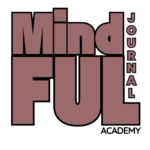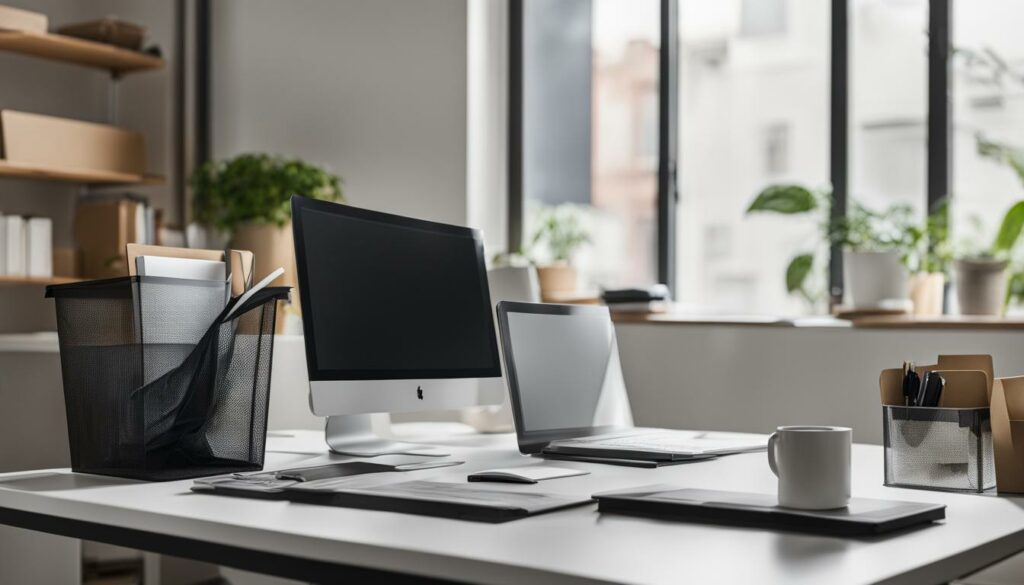Welcome to your ultimate guide to reducing digital clutter and maximizing productivity! In today’s fast-paced digital world, it’s easy to get overwhelmed by the constant influx of information, notifications, and distractions. But fear not, because digital minimalism is here to help you regain control and create a streamlined and efficient digital environment.
By embracing digital minimalism, you’ll learn practical strategies and tips to declutter your digital space, minimize distractions, and optimize your productivity. Whether you’re looking to organize your digital files, streamline your digital workflows, or clear the digital chaos, this guide has got you covered.
From managing virtual clutter to tidying up digital files, we’ll explore various techniques and tools that will transform your digital life. So, if you’re ready to declutter your digital space, enhance your focus, and reclaim control over your digital life, let’s dive in!
Key Takeaways:
- Reduce digital clutter and enhance productivity through digital minimalism
- Organize your digital life to minimize distractions and optimize workflows
- Streamline your digital environment for a more focused and efficient work environment
- Implement strategies for digital clutter management and decluttering
- Create a mindful and intentional relationship with technology to improve productivity
Understanding Digital Clutter and Its Impact on Productivity
Digital clutter is the accumulation of unnecessary files, apps, emails, and other digital content that overwhelms our digital devices and makes it difficult to find what we need. It can have a significant impact on our productivity by diminishing our ability to focus, increasing stress levels, and wasting valuable time.
The Role of Digital Clutter in Diminishing Focus
When our digital devices are cluttered with unnecessary files, apps, and notifications, it becomes challenging to maintain our focus on important tasks. The constant visual and mental distractions hinder our concentration and ability to engage in deep work. Digital clutter creates a chaotic environment that pulls our attention in multiple directions, making it harder to stay focused and productive.
Consequences of Overloaded Digital Spaces
Overloaded digital spaces can have several negative consequences on our productivity and well-being. Some of the consequences of digital clutter include:
- Increased stress levels: The constant visual clutter and the feeling of being overwhelmed by digital content can lead to higher stress levels and reduced mental well-being.
- Decreased efficiency: Spending excessive time searching for files, sifting through emails, or navigating cluttered digital interfaces can significantly slow down our workflow and decrease overall efficiency.
- Lost opportunities: Important tasks, deadlines, and opportunities may be overlooked or missed entirely in a cluttered digital space, leading to missed opportunities and regrets.
Comparison Between Physical and Digital Clutter
While physical clutter is often visible and tangible, digital clutter is less apparent but can be just as detrimental to our productivity. Here are some key differences between physical and digital clutter:
| Physical Clutter | Digital Clutter |
|---|---|
| Takes up physical space | Takes up virtual space |
| Visible and tangible | Less visible but equally overwhelming |
| Requires physical organization | Requires digital organization |
| Can be physically removed | Requires digital cleanup and management |
Reducing digital clutter is essential for regaining focus, productivity, and a sense of control over our digital lives. In the following sections, we will explore strategies and techniques to help you declutter and streamline your digital environment.
Philosophy of Digital Minimalism
Digital minimalism is not about completely disconnecting from technology but rather adopting a mindful and intentional approach to its use. It involves consciously choosing which digital tools and activities add value to our lives and eliminating those that don’t. By embracing digital minimalism, we can create a more purposeful and balanced relationship with technology.
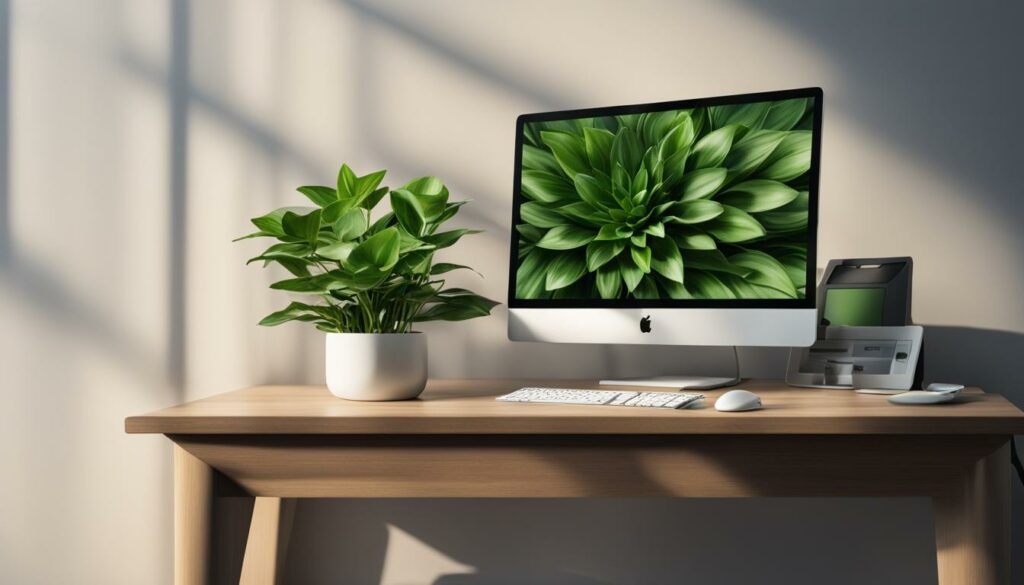
In the digital age, it’s easy to become overwhelmed by the constant stream of information, notifications, and distractions. Digital minimalism offers a refreshing perspective on how we engage with technology, prioritizing quality over quantity and focusing on the intentional use of digital tools.
By adopting a philosophy of digital minimalism, you can regain control of your digital life and enhance your overall well-being. Instead of mindlessly scrolling through social media or constantly checking emails, you can consciously choose to engage with technology in ways that align with your values and goals.
Here are some key principles of digital minimalism:
- Intentional technology use: Digital minimalism emphasizes the importance of being intentional about the technology we allow into our lives. This means carefully considering which apps, devices, and online platforms serve our needs and contribute to our well-being.
- Awareness of digital clutter: Digital minimalism encourages us to be mindful of the digital clutter that accumulates in our digital spaces. By regularly decluttering our devices and digital files, we can create a clean and organized digital environment that fosters focus and productivity.
- Quality over quantity: Instead of mindlessly consuming content and engaging in superficial online interactions, digital minimalism encourages us to prioritize quality over quantity. This means seeking out meaningful connections and information that enrich our lives rather than adding to the noise of the digital world.
- Balancing online and offline activities: Digital minimalism promotes a balanced approach to our online and offline activities. It encourages us to create boundaries and set aside dedicated time for activities that bring us joy, fulfillment, and personal growth outside of the digital realm.
By embracing the philosophy of digital minimalism, you can reclaim your time, attention, and focus in the digital age. It allows you to harness the power of technology without being overwhelmed by its constant demands, enabling you to live a more intentional, balanced, and fulfilling life.
Strategies for Achieving a Streamlined Digital Environment
Creating a streamlined digital environment is crucial for improving productivity and efficiency in today’s fast-paced digital world. By implementing effective strategies, you can declutter your digital space, optimize workflows, and maximize digital productivity. In this section, we will explore essential strategies for achieving a streamlined digital environment.
Distinguishing Between Essential and Non-Essential Digital Tools
One key strategy for streamlining your digital environment is to distinguish between essential and non-essential digital tools. Take the time to evaluate the tools you use regularly and determine their value in enhancing your productivity. Keep the essential tools that align with your goals and eliminate or minimize the use of non-essential tools that only add unnecessary clutter and distractions.
Implementing a Regular Decluttering Schedule
Regular decluttering is essential to maintaining a streamlined digital environment. Set aside dedicated time on your calendar to declutter your digital space. This can include deleting unnecessary files, organizing folders, and archiving or deleting old emails. Having a decluttering schedule ensures that your digital space remains clean and organized, allowing for better focus and productivity.
Enhancing Digital Workflows for Efficiency
Another strategy for achieving a streamlined digital environment is enhancing your digital workflows. Identify areas where your current workflows may be inefficient or causing unnecessary delays. Explore tools and automation options that can simplify complex tasks and streamline processes. By optimizing your digital workflows, you can save time, reduce frustration, and increase overall productivity.
Organizing Digital Documents for Improved Accessibility
Keeping your digital documents organized is essential for easy accessibility and increased productivity. By implementing effective organizing techniques, you can streamline your digital workspace and find files quickly when you need them. This section will provide valuable tips on how to categorize your digital documents, manage email overload, and create a clear folder structure for better organization.
Categorization Techniques for Easy File Retrieval
One of the key aspects of organizing digital documents is categorizing them in a way that allows for easy file retrieval. Here are some techniques you can employ:
- Use descriptive file names: Give your files clear and meaningful names that accurately reflect their content. Avoid generic names or placeholders.
- Create folders based on categories: Organize your digital documents into folders based on topics, projects, or any other classification system that makes sense to you. This will help you quickly locate files related to specific subjects.
- Utilize subfolders: If you have a large number of files within a folder, create subfolders to further classify them and improve organization. This hierarchical structure will simplify the file retrieval process.
- Apply tags or labels: Many file management systems allow you to assign tags or labels to your documents. Take advantage of this feature to add additional metadata and make searching for files even easier.
Tackling Email Overload with Effective Management Systems
Email overload can be a major productivity drain. Implementing effective email management systems can help you stay on top of your inbox and prevent it from becoming overwhelming. Consider the following practices:
- Use filters and folders: Set up filters to automatically sort incoming emails into specific folders based on criteria such as sender, subject, or keywords. This will help you prioritize and categorize your emails, making it easier to process them efficiently.
- Implement a filing system: Create folders within your email client to store important emails, reference materials, or correspondence related to specific projects or topics. This will enable you to quickly locate and retrieve important information when needed.
- Schedule dedicated email time: Instead of constantly checking your inbox throughout the day, allocate specific time blocks for handling emails. This way, you avoid constant interruptions and can focus on other tasks without getting sidetracked.
- Unsubscribe and manage subscriptions: Take the time to unsubscribe from newsletters or mailing lists that no longer provide value to you. Additionally, consider using a separate email address for subscriptions to keep your primary inbox clutter-free.
Adopting a Clear Folder Structure for Better Organization
A clear and logical folder structure is crucial for maintaining an organized digital workspace. By adopting a consistent folder organization system, you can reduce clutter and make it easier to locate files. Here’s how:
- Create a top-level folder hierarchy: Start by establishing a few broad categories for your digital files. These could include “Work,” “Personal,” or specific project names. Use these as top-level folders.
- Further divide folders into subcategories: Within each top-level folder, create subfolders to represent different aspects or subtopics. For example, within the “Work” folder, you might have subfolders for different clients, departments, or types of work.
- Avoid excessive nesting: While subfolders can help organize your files, be mindful of creating too many layers of nesting. If you find yourself drilling down several levels to access a file, it might be time to reconsider your folder structure.
- Maintain a consistent naming convention: Establish a naming convention for your folders that is easy to understand and follow. Consistency in folder naming will ensure that you can easily locate files and maintain organization over time.
By implementing these strategies for organizing digital documents, you can improve accessibility, save time searching for files, and enhance your overall productivity.
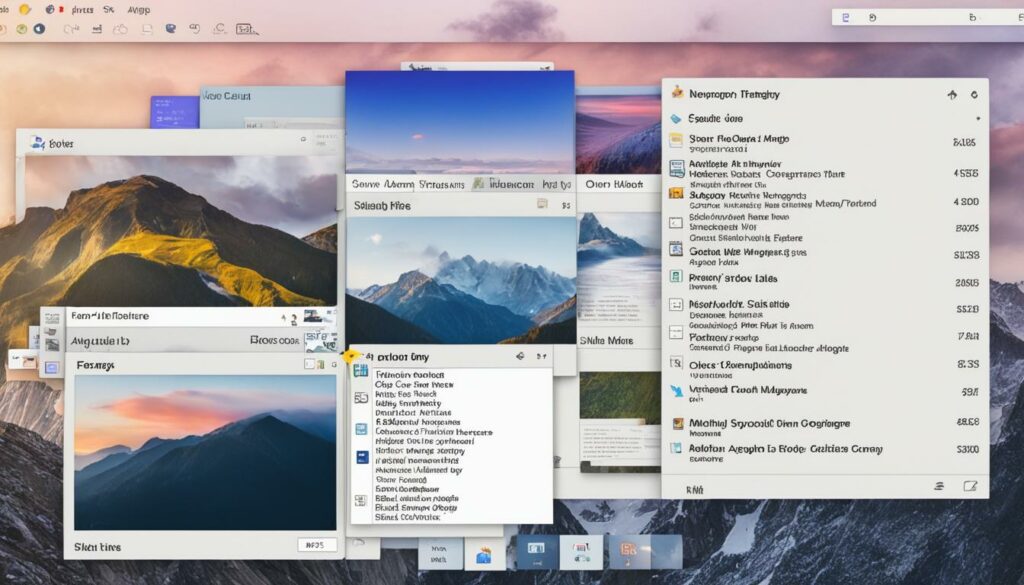
Reducing Digital Distractions to Cultivate Deep Work
In today’s digital age, distractions are a constant presence. Social media notifications, email alerts, and endless online rabbit holes can easily pull us away from our important tasks and hinder our ability to focus. To truly cultivate deep work and enhance our productivity, it is crucial to reduce digital distractions and create an environment that fosters uninterrupted concentration.
Here are some effective strategies to help you minimize online distractions and enhance your focus:
- Mute notifications: Disable unnecessary notifications on your digital devices to minimize interruptions. Determine which apps or platforms truly require instant alerts, and turn off notifications for the rest.
- Designate specific time for focused work: Set aside dedicated time blocks during your day for deep work. During these periods, eliminate all non-essential digital activities and create a distraction-free zone where you can fully engage with your tasks.
- Use website blockers: Install browser extensions or apps that allow you to block access to distracting websites or social media platforms during specific time intervals or when you need to stay focused.
- Organize your digital space: Clear away digital clutter by organizing your files, folders, and digital workspace. A clean and organized digital environment promotes clarity of mind and reduces visual distractions.
- Optimize your device settings: Take advantage of features like “Do Not Disturb” mode or focus modes available on your devices to limit interruptions and create dedicated work zones where you can concentrate without distractions.
To illustrate the impact of reducing digital distractions, consider the following table:
| Distraction | Effect on Focus |
|---|---|
| Constant email notifications | Fragmented attention and decreased productivity |
| Endless scrolling on social media | Time wasted and difficulty regaining focus |
| Notifications from messaging apps | Interruptions and disruption of workflow |
| Unorganized digital workspace | Visual clutter and difficulty finding necessary files |
By implementing these strategies and minimizing online distractions, you can create a digital environment that supports deep work and enhances your focus. Remember, reducing digital distractions is a gradual process, so be patient with yourself as you work toward cultivating a more focused and productive digital life.
Redesigning the Digital Workspace for Maximum Productivity
The design of your digital workspace plays a crucial role in optimizing your productivity. By creating a clean and organized environment, you can minimize distractions and maximize your focus. In this section, we will explore the importance of choosing a minimalist desktop aesthetic and implementing digital zoning techniques to enhance your work experience.
Choosing a Minimalist Desktop Aesthetic
A minimalist desktop aesthetic refers to a simplified and clutter-free layout of your computer screen. By removing unnecessary icons, widgets, and wallpapers, you can create a visually calming and distraction-free workspace. Adopting a minimalist desktop aesthetic allows your mind to concentrate on the task at hand without being overwhelmed by visual noise.
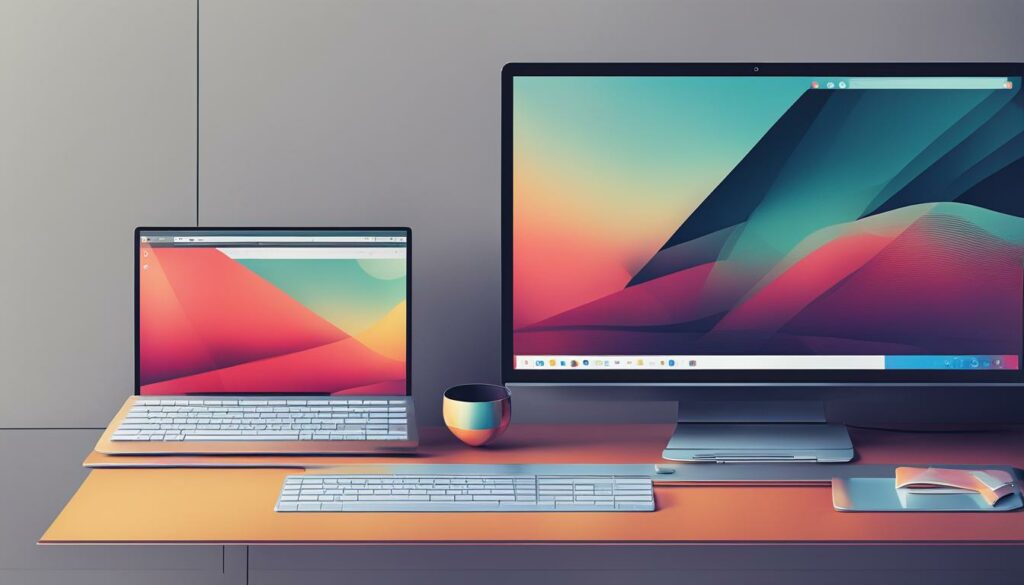
Limiting Multitasking with Digital Zoning Techniques
While multitasking may seem like an efficient way to tackle multiple tasks, it often leads to decreased productivity and increased errors. Digital zoning techniques can help you stay focused on one task at a time by designating specific areas or applications for different types of work.
For example, you can dedicate one desktop space for writing and another for email communication. By allocating distinct zones for different activities, you reduce the temptation to switch between tasks, allowing for deeper concentration and improved efficiency.
By redesigning your digital workspace with a minimalist desktop aesthetic and implementing digital zoning techniques, you can create an environment that fosters productivity and minimizes distractions. Take a moment to reflect on your current setup and consider making adjustments that will optimize your work experience.
Reduction Techniques for Digital Noise
In today’s digital age, we are constantly bombarded with excessive information, notifications, and distractions that clutter our digital lives and hinder our focus and productivity. To reclaim control over your digital experience and create a more streamlined and productive environment, it is essential to implement reduction techniques for digital noise. These techniques will help you minimize digital distractions, eliminate digital clutter, and effectively manage digital notifications.
“Digital noise refers to the excessive and unnecessary information, notifications, and distractions that clutter our digital lives.”
One effective technique for reducing digital noise is to curate your digital space by decluttering unnecessary files, apps, and emails. Take the time to assess your digital possessions and eliminate anything that no longer serves a purpose or adds value to your life. This decluttering process will create a digital environment that is free from unnecessary distractions and allows for better focus and productivity.
Another important aspect of minimizing digital distractions is managing your notifications. Nowadays, we receive notifications from various apps, platforms, and devices, constantly pulling our attention away from important tasks. By selectively managing your notifications and determining which ones are truly essential, you can reduce the constant interruptions and regain control over your focus.
Creating dedicated digital spaces for specific tasks can also help reduce digital noise. For example, setting up a designated workspace on your computer for work-related activities can limit distractions from personal tasks and increase your productivity. Additionally, utilizing tools and apps that block or limit access to certain websites or apps during specific work periods can further minimize distractions and promote deep work.
Additionally, taking regular breaks from digital devices can be highly beneficial in reducing digital noise. Engaging in activities that promote mindfulness and relaxation, such as meditation or physical exercise, allows your mind to rest and recharge, decreasing the mental clutter caused by continuous exposure to digital stimuli.
By implementing these reduction techniques for digital noise, you can streamline your digital experience, minimize distractions, and create a more focused and productive digital environment.
Tools and Apps for Digital Clutter Management
Managing digital clutter and enhancing productivity can be made easier with the help of various tools and apps. These digital solutions offer effective ways to organize, secure, and prioritize your digital life. Here are some essential tools and apps that can assist you in decluttering and streamlining your digital space.
Password Management for Improved Security and Simplicity
In today’s digital age, it’s crucial to prioritize security and simplify the process of managing multiple passwords. Password management tools such as LastPass, Dashlane, and 1Password provide secure storage for your passwords and enable you to generate strong, unique passwords for each online account. These tools also offer features like auto-fill, two-factor authentication, and password sharing, making it easier to access and manage your accounts while ensuring maximum security.
Cloud Services to Reduce Storage and Increase Mobility
Cloud services like Google Drive, Dropbox, and OneDrive offer a reliable and convenient solution for storing and accessing your digital files. By utilizing cloud storage, you can free up space on your devices and reduce the need for physical storage solutions. Cloud services also provide seamless synchronization across multiple devices, allowing you to access your files anytime, anywhere. Whether it’s documents, photos, or videos, these services offer secure storage and organization options, making it easier to manage and share your files.
Apps to Organize and Prioritize Tasks
Task management and organization apps are invaluable tools for staying productive and focused. Apps like Todoist, Trello, and Microsoft To Do help you organize your tasks, set priorities, and create efficient workflows. These apps offer features such as due dates, reminders, subtasks, and collaboration options, enabling you to break down your tasks and manage them effectively. By utilizing these apps, you can declutter your mind and stay on top of your goals and responsibilities.
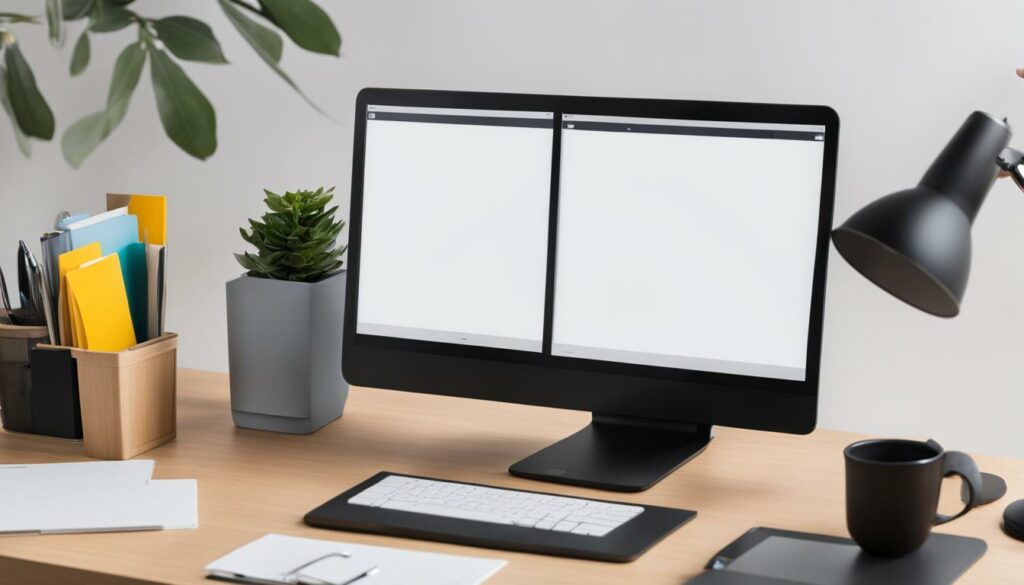
Tips for Maintaining a Decluttered and Organized Digital Life
Once you have decluttered and organized your digital life, it is important to maintain it to reap the long-term benefits. Follow these practical tips for maintaining a decluttered and organized digital life:
Building Habits Around Regular Digital Clean-up
Regular digital clean-up is essential for keeping your digital space clutter-free. Set aside dedicated time each week or month to declutter and organize your files, emails, and digital devices. Establish a routine and stick to it. Here are some habits to incorporate into your digital clean-up routine:
- Delete unnecessary files and documents regularly. Remove outdated or duplicate files to free up storage space and improve organization.
- Organize your files into relevant folders and use descriptive names for easy retrieval. Create a consistent file naming convention to maintain consistency and find files easily.
- Clear out your email inbox by unsubscribing from unnecessary newsletters and deleting old or irrelevant messages. Use filters and labels to organize incoming emails automatically.
- Review and declutter your digital devices regularly. Delete unused apps, media files, and contacts that no longer serve a purpose.
By incorporating these habits into your digital clean-up routine, you can ensure a clutter-free digital environment and optimize your productivity.
Creating a Mindful Relationship with Technology
Mindful technology use is key to maintaining a decluttered and organized digital life. By being conscious of your digital habits and making intentional choices, you can enhance your productivity and overall well-being. Consider these tips for developing a mindful relationship with technology:
- Set boundaries for your technology use. Establish designated tech-free zones or tech-free times to disconnect and focus on other activities.
- Manage your notifications by disabling unnecessary alerts. Limiting notifications can help reduce distractions and improve your ability to concentrate.
- Practice digital detoxes regularly. Take breaks from screens and engage in activities that promote relaxation and creativity, such as mindfulness exercises, reading, or spending time in nature.
- Be intentional about the apps and digital tools you use. Only keep those that align with your goals and enhance your productivity. Consider deleting apps that are causing excessive distraction or adding minimal value to your life.
By adopting a mindful approach to technology use, you can maintain a balanced digital life and prevent digital clutter from accumulating.
Conclusion
In conclusion, the practice of digital minimalism offers a solution to reducing digital clutter and enhancing productivity. By implementing the strategies and tips discussed in this guide, you can create a streamlined and organized digital environment that promotes focus, efficiency, and a mindful use of technology.
Embracing the minimalist approach to digital clutter allows you to take control of your digital life. You can prioritize essential digital tools and eliminate non-essential ones, implement regular decluttering schedules, and enhance your digital workflows for improved productivity.
Organizing your digital documents, reducing digital distractions, redesigning your digital workspace, and employing techniques to reduce digital noise are just some of the ways to optimize your digital environment and enhance your productivity.
By embracing a mindful and intentional approach to technology use, adopting minimalist aesthetics, and maintaining regular digital clean-up habits, you can achieve a more productive and fulfilling digital life. So, take the first step towards digital minimalism, declutter your digital space, and enjoy the benefits of a focused and simplified digital experience.
FAQ
What is digital clutter?
Digital clutter refers to the accumulation of unnecessary files, apps, emails, and other digital content that overwhelm our digital devices and make it difficult to find what we need.
How does digital clutter affect productivity?
Digital clutter diminishes focus, increases stress levels, and wastes valuable time, significantly impacting our productivity.
What is digital minimalism?
Digital minimalism is an intentional approach to technology use, where we choose which digital tools and activities add value to our lives and eliminate those that don’t.
How can I create a streamlined digital environment?
To create a streamlined digital environment, distinguish between essential and non-essential digital tools, implement a regular decluttering schedule, and enhance digital workflows for improved efficiency.
How can I organize my digital documents?
You can organize your digital documents by using categorization techniques for easy file retrieval, implementing effective management systems to tackle email overload, and adopting a clear folder structure for better organization.
How can I reduce digital distractions?
To reduce digital distractions, create an environment that fosters deep work and enhanced focus by minimizing online distractions, establishing boundaries, and managing notifications effectively.
How can I redesign my digital workspace for maximum productivity?
Redesign your digital workspace by choosing a minimalist desktop aesthetic, limiting multitasking with digital zoning techniques, and organizing your digital tools for improved focus and productivity.
What are some techniques for reducing digital noise?
To reduce digital noise, you can minimize unnecessary notifications, unsubscribe from irrelevant email lists, and declutter your digital spaces regularly.
Are there any tools or apps that can help manage digital clutter?
Yes, there are various tools and apps available such as password management tools for improved security and simplicity, cloud services to reduce storage needs and increase mobility, and apps to efficiently organize and prioritize tasks.
How can I maintain a decluttered and organized digital life?
You can maintain a decluttered and organized digital life by building habits around regular digital clean-up, setting boundaries with technology, and cultivating a mindful relationship with technology.
How Can Reducing Digital Clutter Help in Adopting Mindful Tech Use for Digital Minimalism?
Reducing digital clutter is one of the key strategies for digital minimalism. By decluttering devices and minimizing digital distractions, individuals can adopt mindful tech use. This allows for better focus, increased productivity, and reduced stress. Embracing simplicity in the digital realm can lead to a more balanced and intentional lifestyle.
Source Links
- https://www.becomingminimalist.com/25-areas-of-digital-clutter-to-minimalize/
- https://clean.email/blog/productivity/digital-minimalism
- https://www.simplystoring.com/the-minimalist-approach-to-digital-clutter-and-organizing-your-online-life/
